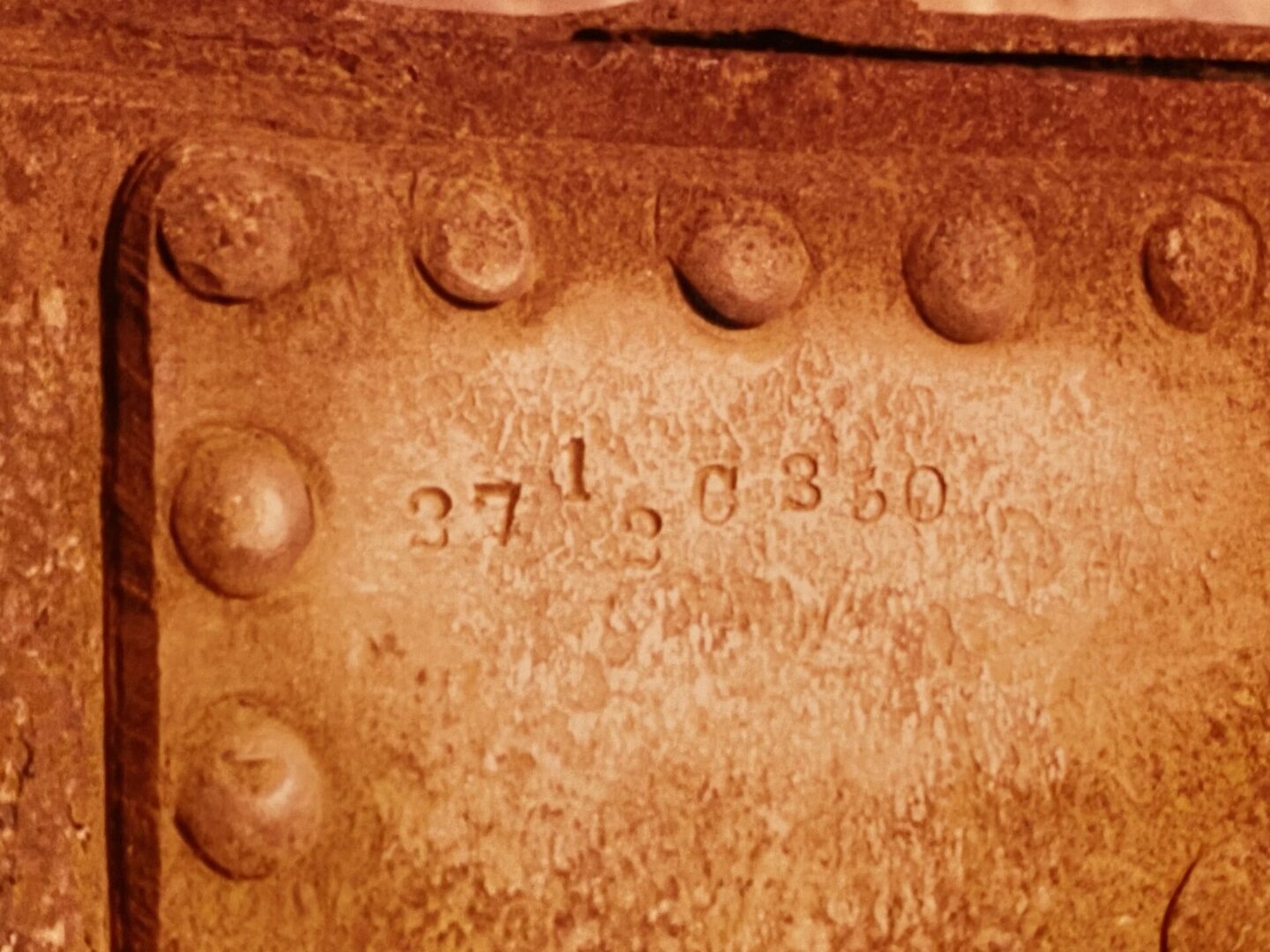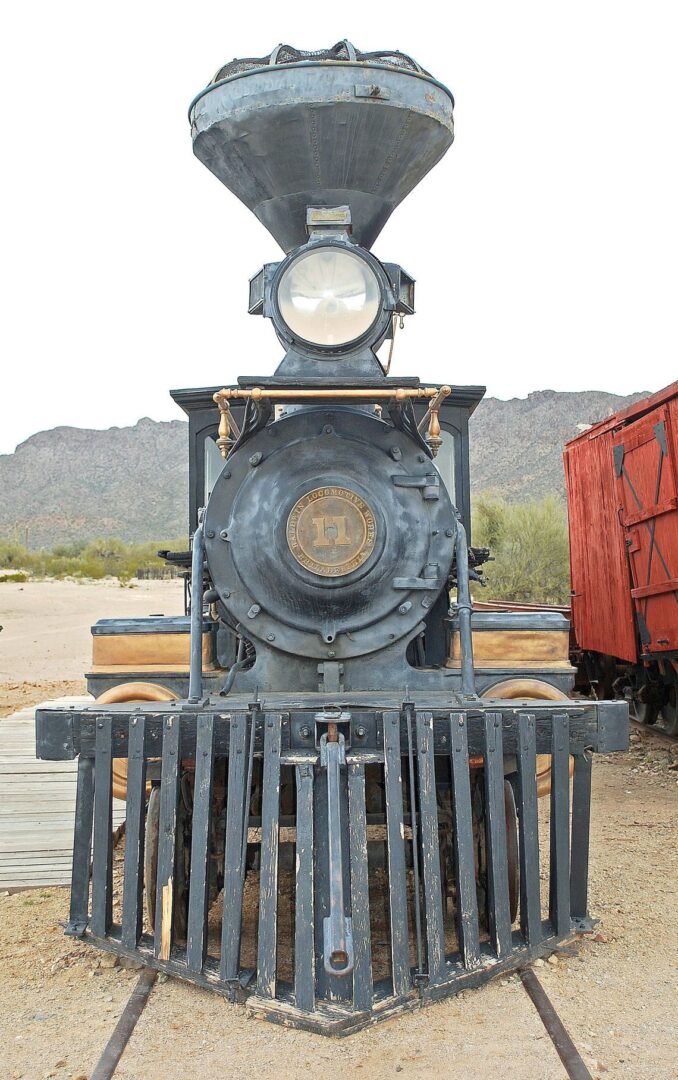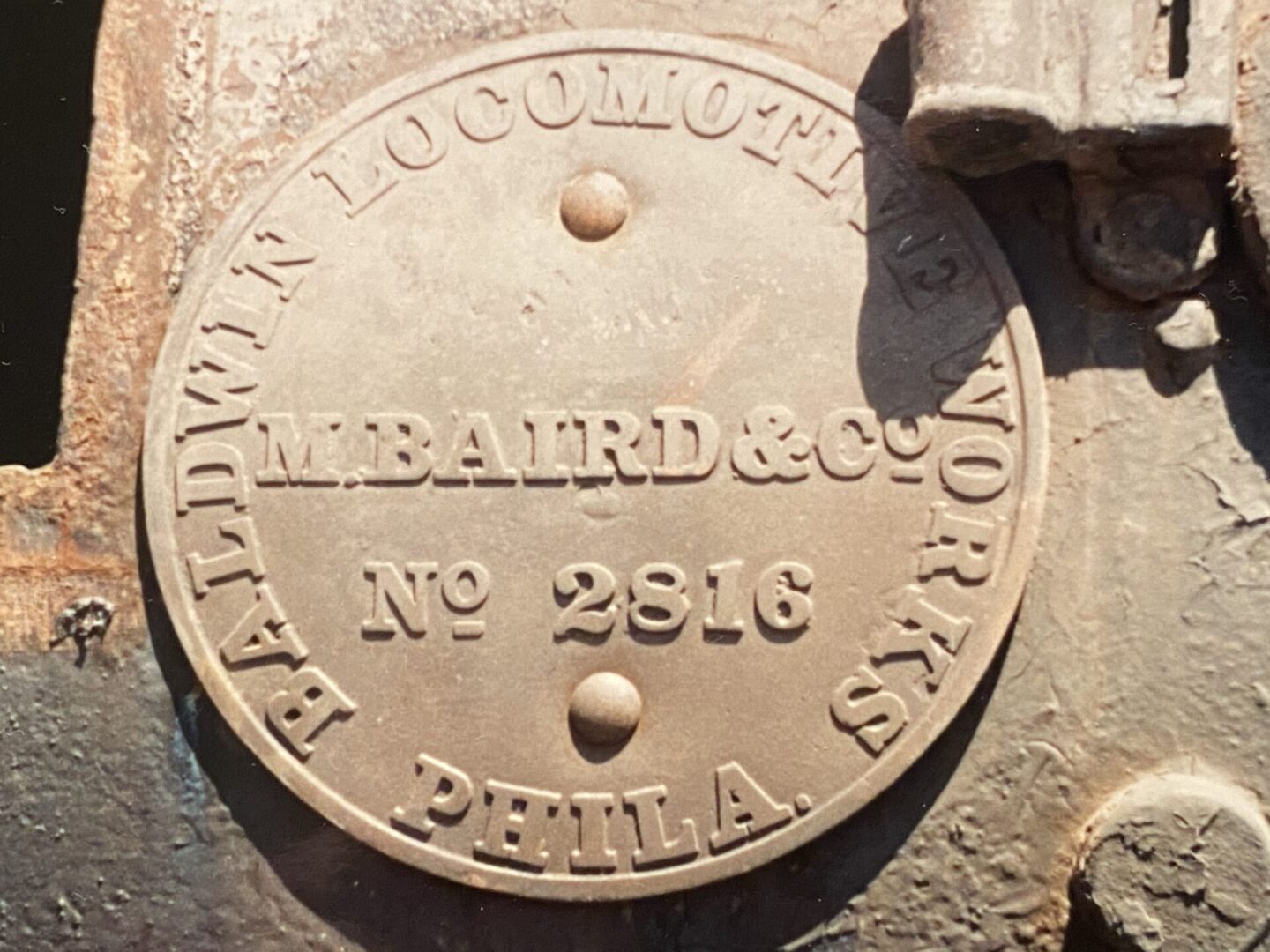The “American” steam locomotive of the late 19th century epitomized state-of-the-art engineering technology in its day, with graceful lines beautifully expressed by skilled craftsmanship. Rich hardwoods, golden alloys, and steel blue cladding, each ornately sculpted and formed against brightly chosen paint schemes finished with gold leaf filigree, all adorned these locomotives as elaborate celebrations of this technology and the period. Perhaps the most refined and elegant engineering lines of any steam locomotive were those of the Baldwin Locomotive Works of Philadelphia in the 1870s. The durability, reliability, and aesthetic appearance of these locomotives made them very popular with many railroad companies throughout America and the world. During this time, the Virginia & Truckee Railroad Company ordered three “America” locomotives from Baldwin for their passenger service between Virginia City and the Central Pacific Railroad at Reno. The Reno (1872), Genoa (1873), and Inyo (1875) were all built to the same general engineering specifications indicated by Baldwin’s Drawing No. 20 of Dec. 12, 1871.
These three V&T locomotives survive to this day, but not their master erection drawing; only a photographic mosaic of Drawing No. 20 taken circa 1940 in the V&T engine house in Carson City survives. Although extensive deterioration was already apparent in these photos at that time, this important historical record has now been fully restored over a two-year period using computer-aided design (CAD). All lines and curves have been measured by hand with an accuracy of 1/64 inch and then digitized, using the original line segments appearing and calibrating them to local dimensions called out on the drawing whenever possible. The result is a remarkably consistent exact 2-inch scale restoration of Drawing No. 20 according to its original specifications, so accurately and skillfully drawn by hand over 150 years ago. This restoration has revealed previously lost information, such as the optional wagon top boiler design, as well as the original 144 boiler tube locations still visible on the V&T engines. Although the railroads continuously upgraded and replaced such factory equipment on their locomotives, many original components are still visible and can be traced back to Baldwin’s Drawing No. 20.
Drawing No. 20 has two elevations: side and transverse, along three sections: front, center, and rear. For pricing and availability of prints, contact V&T Enterprises: [email protected].
The order for the Virginia and Truckee Rail Road locomotive Reno was placed on January 13, 1872, with the Baldwin Locomotive Works in Philadelphia. In the order specification for one engine of Class 27 1/2 C, later renamed 8.26.C.2, Baldwin assigned No. 350 to the engine, being the same number of locomotives made in that class to date. A transcription of the original Baldwin order, currently in the Baldwin archives of the DeGolyer Museum at Southern Methodist University in Dallas, is shown here. In addition to the prominent reference to Drawing No. 20 on this order specification, all general construction specifications are depicted, including a blank reference to the tender plan drawing. As in the Inyo’s specification of 1875, we refer to this as Drawing No. 90. Unfortunately, the location and/or existence of Baldwin Drawing No. 90 are currently unknown. A replication of this drawing must necessarily start with the actual artifact.
Following the catastrophic fire on April 24, 1995, at Old Tucson Studios, where the Reno had been on outdoor static display, the author conducted a series of on-site engineering measurements and archeological documentation immediately afterward and before any disturbance to the artifact. The authenticity of both the locomotive and tender were determined by the Baldwin builder’s plate on the engine (No. 2816 and the chiseled-off construction date of 1872), V&T number plate (No. 11), and the appearance of the original Baldwin order stamp on the top inside engineer’s side leg of the tender, namely 27 1/2 C350. Although the lower half of the tender had rusted out and now has a welded replacement, the upper half and overall geometry appears to be original as built. The complete incineration of all sills, planks, and components exposed new visible access to the original timber support with scorched silhouette impressions left on matching plates, as well as previously hidden internal metal linkage and assembly from the surviving iron castings. Although the rear slope sheet on the tender had been partially removed to make room for a compressed air tank to power the Reno, and the original wood bolster beams had been replaced with steel I beam to support the tank, the as-built dimensions of the tender could be replicated from the original upper structures and components, as well as all original sills, planks, and wooden structures. The final digital replication of this tender, in fact, agrees with the 2200-gallon capacity and overall specifications appearing in the original order to Baldwin.

Interpretive livery appearance of the Reno’s side tender tank with 8” lettering. Rectangular edges indicate the tender’s relative side elevation dimensions: 40” height and 198” length
The earliest known photo with the livery appearance of a V&T Baldwin passenger locomotive is the October 1877 Carleton E. Watkins mammoth photo of the V&T engine house at Carson City. In that photo the Inyo (1875) appears with "V.&T.R.R." lettering on its tender, surrounded by blurred but visible striping and arabesques against a base paint consistent with a dark Wine Color that was specified in its original Baldwin order. The order specifications for Painting Style and General Finish on the Inyo and Genoa (1873) were all back referenced to the Reno's original paint style and livery appearance. Shortly thereafter during the winter of 1877-1878, Watkins took his photo of the Lightning Express in Carson City, which is the earliest known image of the Reno. In that photo, believed to be taken with the original livery style, striping is clearly visible and arabesque presence exists which provide the first calibrated determination of their locations on the tender. Inner striping between the arabesques and lettering is also seen here, which is missing by 1890. The lettering style on the tender appears most clearly in the ca. 1890 James H. Crockwell photos of the Reno and the Genoa in Virginia City, which is consistent with the same early 1870s Roman font style used by Baldwin painters that were in common use by printers and period sign painters. These are the touchstones back to the tender’s livery appearance. Even though the V&T paint shop had modified this striping somewhat by 1890, it still retained the general Baldwin painting style and finish on its 4-4-0 passenger locomotives up until that time. The end arabesque design used as late as 1875 for the Reno’s tender is taken from the 1871 Baldwin Locomotive Works builder photo of the Camden & Atlantic Camden. This was about the same time that Baldwin had also sent the V&T its general specification for the locomotive Camden as a proposal for the railroad’s first flagship passenger locomotive, the Reno.
Three complete elevations in a 2-inch scale have been replicated for Drawing No. 90: side, end, and top views. For order inquiries, please contact: [email protected].





